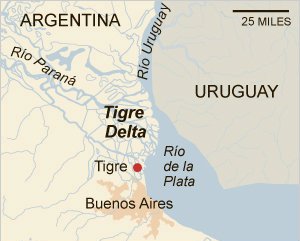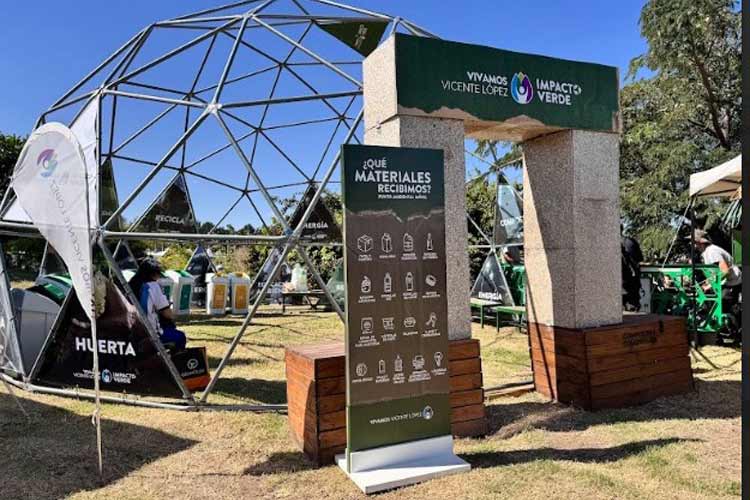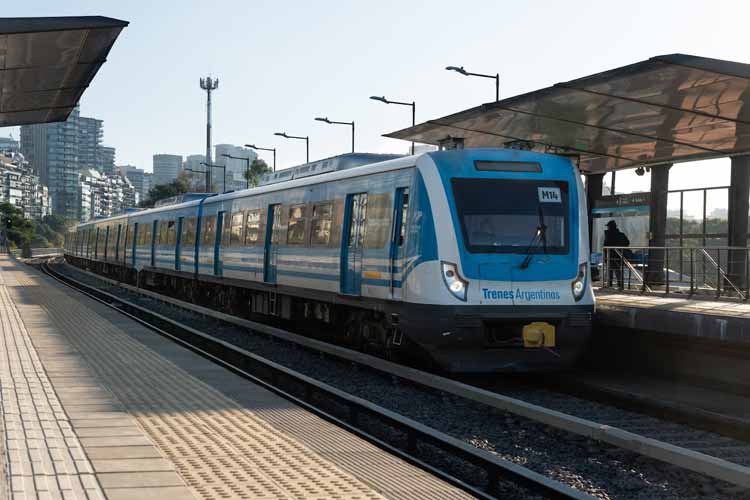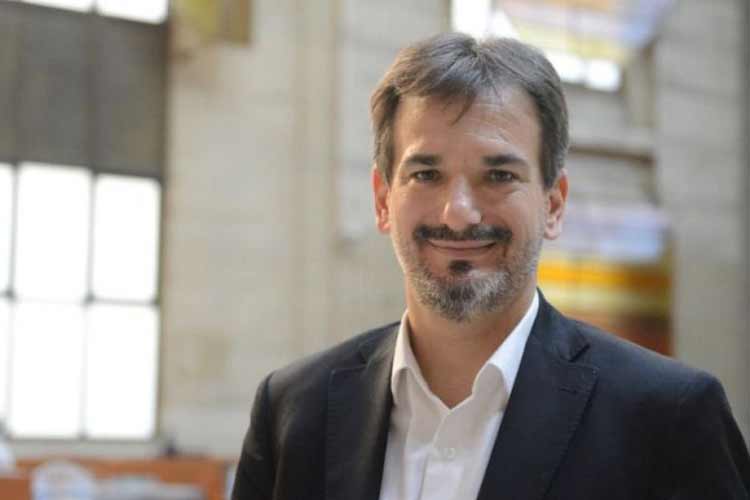En el artículo, el periódico resaltó los puntos más visitados por los turistas como el Delta, el Museo de Arte y el Puerto de Frutos, como así también su arquitectura y entorno natural.
Asimismo destaca el momento histórico de crecimiento que vive Tigre y el impulso que le ha dado el Municipio en materia de conservación de su patrimonio histórico y promoción.
Overnighter
In Argentina, Touring the Tigre Delta
Beatrice Murch for The New York Times
In Tigre, Argentina, riverboats depart the Estación Fluvial for trips around the Tigre Delta.
By MICHAEL T. LUONGO
THE stunning belle-époque building that houses the Museo de Arte Tigre in the Tigre Delta of Argentina opened as a social club a century ago, when rich bohemians would visit the region to give themselves a respite from Buenos Aires. The building eventually fell into disuse before reopening as a museum in 2006, newly refurbished with marble, bronze and stained glass as part of a municipal improvement project.
Its fortunes in many ways mirror those of the delta, 45 minutes by train from Buenos Aires. The area has been rediscovered by the leisure class that abandoned it for beachier getaways, leaving behind their imprint in the paintings they created that hang in the museum.
“There are three places in Buenos Aires which are changing, which everyone is talking about,” said Diana Saiegh, the director of the Museo de Arte Tigre. “San Telmo, Palermo Viejo, and now, Tigre. The most rich people of Buenos Aires have come here.”
The renaissance comes after a long decline during which down-market tourists began traveling to Tigre, oftentimes without staying overnight, and it slowly developed a honky-tonk, rundown feel. Recently however, the municipality of Tigre has spearheaded renovations like improving the waterfront walkways along the Río Luján and renovating the shopping and information arcades near the main train station. Developers have also become attracted to Tigre, building homes and spas on its remote islands, aiming once again at the very wealthy.
The region is vast. At 5,405 square miles, the Tigre Delta is among the world's largest, and it is the only major delta not emptying into a sea or ocean. It flows instead into the Río de la Plata, which separates Argentina and Uruguay, after the Río Paraná splits into several smaller rivers and forms a multitude of sedimentary islands covered in forest and grasslands. With its islands and canals, Tigre is what Venice might have looked like before development.
Tigre is named for the jaguars — which were called tigers — that once roamed here, before the islands became important agriculturally for wicker and fruit in the mid-1800s; the British built trains bringing these products to market. After an 1877 yellow fever epidemic in Buenos Aires, Tigre was seen as a healthful retreat.
British character pervades Tigre, with Victorians and half-timbered mock Tudors. Many of those structures and the museum are on what locals call “continente,” the mainland. This center sits on the Río Luján tributary and is a launching pad from which boats travel from the Estación Fluvial terminal to venture to the islands scattered in the delta. The center has no shortage of draws. In addition to the museum, there is an amusement park and a market where handmade reed furniture, leather, artisanal food and other products are sold.
Tigre still attracts artists, like Sebastián Páez Vilaró, son of the Uruguayan artist Carlos Páez Vilaró. His atelier, where he makes bronze and copper repoussé art, is a miniature of his father's amorphous Casa Pueblo in Punta Del Este. Mr. Páez Vilaró, 25, said he finds Tigre inspiring “because I can enjoy nature and the land and still be close to Buenos Aires.”
But it is the delta's remote, carefree islands that provide a greater reprieve from urban life. A number of spa resorts and gated communities — called “countries” after American country clubs — have opened on the islands, once known only for rugged day trips. For example, there is Bonanza, an island where the Bonanza Deltaventura company offers horseback riding, kayaking, bird-watching and tramping through forests, where botanists point out plant species. Some new developments attempt to bridge the two worlds.
One of them, the Isla el Descanso, is a small island occupied by a retreat that highlights its natural attributes: lagoons, channels and gardens. The owner, Claudio Stomato, created the retreat when he converted his weekend home into a retreat with sculptures by Alberto Bastón Díaz, an Argentine artist. Its most famous visitor was Madonna, who came in 2008 with her children and bodyguards in tow.
Other developments are more ambitious. Delta Eco Spa, on an island near Bonanza, is a sprawling resort that opened in November 2009, six years after construction began. Building is continuing, according to the hotel's commercial director, Marcelo Israel, with much of the material coming laboriously by boat. “Constructing in the water is not the same as constructing on solid ground,” he said.
Though its physical structure is not finished, the spa's vision seems complete. It is meant for romance: Children under 10 are not permitted, and rooms feature showers for two; each room comes with a sprawling patio deck. Private vacation bungalows are being developed on the island to offer guests even more privacy.
The precursor to Delta Eco and the wave of other spa resorts that have been built is Rumbo 90, which opened in 2005. It's intimate, with only seven guest rooms and a rustic-romantic candlelit dining area whose menu emphasizes river fish and other local products. It's possible to visit for half days or just for lunch, but Paula Gezzi, an owner, said that day-trippers are limited to maintain the sense of solitude. The resort fronts Canal del Este, which Ms. Gezzi described as “upscale.” Across the water, a neighboring island has large, expensive homes.
Ms. Gezzi, 32, vacationed as a child in Tigre. “Twenty years ago,” she said, “the only thing to do was have some fun in the day and then return to the city, but now people choose to stay on the islands.” She added, “you are only half an hour from land, but you feel very far away.”
Her sentiments were echoed by Norma Effrón of Buenos Aires, who was celebrating her 54th birthday at Rumbo 90 and was staying there overnight for the first time. “I love the vegetation,” she said. “I love the water. There was a time when I used to come very often, but it was only to stay for the day.”
This time, she said, she found that “Tigre is a way to refresh the head.”
Susana Neira, 53, a Buenos Aires-based tour guide, finds the mainland just as restorative. Ms. Neira is a member of the Buenos Aires Rowing Club, located between Tigre's train station and the Estación Fluvial. She calls the club's baronial British structure a “Harry Potter place,” but it also looks like an Abercrombie & Fitch ad location, with its ivy-covered crew-boat storage areas. Among Ms. Neira's favorite pastimes is rowing along the Tigre waterfront.
As she paddled there on a recent trip, people waved from the Puerto de Frutos, the tourist market. At water level, the intimacy is astounding: kayakers stop one another for directions, and one can hear the conversations emanating from the docks of island houses built on stilts.
The crew boat returned to Tigre as the sun set, casting a golden glow over the lapping water, silhouetting the Parque de la Costa amusement park.
Ms. Neira stopped rowing, taking in the view. “I spend all my free time here in Tigre,” she said.
IF YOU GO
For general information, laisladelta.com.ar is a good source.
From Buenos Aires, a 45-minute train goes from Retiro Station in Buenos Aires to Tigre, and it runs about three times an hour. The cost is a mere 1.70 Argentine pesos, or 45 cents at 3.9 Argentine pesos to the dollar. Taxis from Buenos Aires to Tigre run about 120 pesos (about $31).
A scenic Sturla ferry boat connects Puerto Madero (54-11-4731-1300; www.sturlaviajes.com.ar) in Buenos Aires to Estacion Fluvial in Tigre. It costs 75 pesos. Private water taxis can run as much as five times that, but many resorts are also on the Interisleñas boat bus routes, which cost 19 pesos. Transit can be confusing and is best coordinated with the resort or travel agent.
Boat transfers to the islands from downtown Tigre are often included with the cost of a resort room.
WHERE TO STAY
Most resorts are all-inclusives, with excursions and spa treatments extra.
Delta Eco Spa (54-11-5236-0553; deltaecospa.com) is on the western delta's Río Carapachay. Standard rates from 330 pesos per person per night to 570 pesos for bungalows.
Rumbo 90 (54-9-11-5843-9454; rumbo90.com.ar) is on Canal del Este, in the eastern delta. Standards from 440 pesos per person per night to 739 pesos for Jacuzzi suites.
Bonanza Deltaventura (54-11-4728-1674; deltaventura.com) is in an 1898 villa on a former Río Carapachay fruit plantation, ideal for the eco-conscious. From 172 pesos for day trips, 560 pesos for two--night stays.
GUIDES AND TOURS
Say Hueque Tours (54-11-5199-2517; sayhueque.com) runs reasonably priced adventure delta excursions.
Borello Travel (800-405-3072 or 54-11-5031-1988; borellotravel.com) runs luxury spa and art tours.
Susana Neira acts as a guide in Tigre and Buenos Aires (54-9-11-4992-3780; susananeira159@gmail.com) as does Mariana Jimenez (54-9-11-4997-7832; mariana.v.jimenez@gmail.com;).
SIGHTS
Museo de Arte Tigre, Paseo Victorica 972, Tigre (54-11-4512-4528; www.mat.gov.ar).
Atelier Sebastián Páez Vilaró and Casa Pueblo Tigre, General Campos 160, Tigre (sebastianpaezvilaro.com). By appointment only.
Isla El Descanso, Rio Sarmiento (54-11-4825-6996; islaeldescanso.com).
Puerto de Frutos (puertodefrutos-arg.com.ar) is a market that is a 10-minute walk from the Tigre train station.
Parque de la Costa (54-11-4002-6000; parquedelacosta.com.ar) is a waterfront amusement park next to Puerto de Frutos and Tren de la Costa station.
NEW YORK TIMES
Recorriendo el delta de Tigre en Argentina
Por MICHAEL T. LUONGO
El impresionante edificio belle-époque que alberga el Museo de Arte Tigre, en el Delta del Tigre de Argentina había sido abierto como un club social hace un siglo, cuando los ricos bohemios acostumbraban visitar la región para darse un respiro y descansar de Buenos Aires. Por un largo tiempo la construcción cayó en desuso hasta que fue reabierta como museo en el año 2006 y recientemente restaurada con mármol, bronces y vitrales como parte del proyecto de mejoramiento y conservación de edificios históricos que lleva adelante el Municipio de Tigre.
Desde donde se lo mire el Delta posee muchas ventajas, a sólo 45 minutos en tren desde la Ciudad de Buenos Aires. Un área que ha sido redescubierta por la clase alta que tiene tiempo libre, la misma que lo había abandonado por salidas playeras o que tenía el recuerdo del delta como cuadros colgados de un museo.
“Hay tres lugares en Buenos Aires que están cambiando y de los que todo el mundo esta hablando hoy en día” dice Diana Saiegh, la Directora del Museo de Arte de Tigre. “San Telmo, Palermo Viejo y ahora Tigre. La gente más rica de Buenos Aires se ha venido a Tigre”.
Este renacimiento viene tras una larga decadencia del mercado turístico que viajaba a Tigre, muchas veces sin siquiera quedarse una noche o entrar a un bar. De todos modos recientemente la Municipalidad de Tigre ha impulsado una serie de renovaciones que han mejorado las salidas a lo largo del Río Luján y ha modernizado los centros comerciales y la información cerca de la estación de tren. Los desarrolladores paralelamente también se han visto atraídos por Tigre, construyendo casas y spas en remotas islas, apuntando una vez más al público adinerado.
La región es muy amplia, 14.000 km cuadrados hacen del Delta de Tigre uno de los lugares más grandes del mundo y se trata del único gran delta que no concluye en un mar o en un océano. Desemboca dentro del Río de la Plata que separa a la Argentina de Uruguay, después del Río Paraná se divide en varios ríos pequeños y forman una multitud de islas sedimentadas cubiertas por vegetación y praderas. Con estas islas y canales, Tigre se ve como Venecia pudo haberse visto antes de su desarrollo.
El nombre Tigre era utilizado como nombre para los jaguares – que eran llamados tigre - y que alguna vez rondaron por la zona, antes de que las islas cobraran relevancia en materia de agricultura para mimbrería y frutas allá por mediados de 1800 cuando los inlgeses construyeron los trenes que permitían llevar estos productos al mercado. Después de la fiebre amarilla que en 1877 azotó Buenos Aires, Tigre fue considerada un retiro saludable.
El carácter británico prevalece en todo Tigre tanto en sus casas Victorianas como en la arquitectura con entramados de madera de los Tudors. Muchas de esas estructuras y museos son llamadas “el continente” por los vecinos locales. El centro se situa sobre el Rió Luján y es un lugar de embarque para las lanchas que viajan desde la Estación Fluvial hacia las islas del delta. Además del museo hay un parque de diversiones y un mercado de artesanías, cestería, cuero y comida artesanal, entre otros productos que allí se venden.
Tigre aún atrae artistas como Sebastián Páez Vilaró, hijo del artista uruguayo Carlos Páez Vilaró. Su atelier, donde realiza bronces es una miniatura de Casa Pueblo, la casa amorfa de su padre en Punta del Este. El señor Páez Vilaró, 25, señaló que encontró en Tigre la inspiración “porque puedo disfrutar la naturaleza y la tierra estando cerca de Buenos Aires”.
Pero son las remotas islas del delta las que proveen un gran descanso de la vida urbana. Un número de hoteles spa y barrios cerrados llamadas “countries" como los American country clubes – se han abierto en las islas, conocidas solo a través de excursiones diarias. Por ejemplo esta el caso de Bonanza una isla donde Bonanza Deltaventura ofrece cabalgatas, paseos en kayak, avistaje de aves y caminatas a través de bosques, donde los amantes de la botánica pueden disfrutar de diferentes especies de plantas. Algunos nuevos desarrollos apuntan a unir esos dos mundos.
Uno de ellos es la Isla el Descanso, una la isla pequeña ocupada por un refugio que resalta sus atributos naturales : lagunas, canales, jardines y mucha naturaleza. Su dueño, Claudio Stamato, lo creó cuando quizó convertiar su casa de fin de semana en un lugar de descanso con esculturas del artista argentino, Alberto Bastón Díaz. Su visitante más famosa fue Madonna, quien estuvo en 2008 con sus hijos y guardaespaldas.
Otro desarrollos son aún más ambiciosos. El resort Delta Eco Spa, en una isla cerca de Bonanza, abrió en Noviembre de 2009, seis años después de haberse iniciado la construcción. Esta continúa, de acuerdo al director comercial del hotel, Marcelo Israel, gran parte del material es traído trabajosamente en bote. “Construir en el agua no es lo mismo que construir en tierra sólida” afirmó.
A pesar de que su estructura física no está terminada, la parte del spa esta completa y es un lugar ideal para el romance. Chicos menores de 10 años no están permitidos, los cuartos tienen duchas para dos y cuentan con un patio con deck privado. Los bungalows privados han sido desarrollados en la isla para ofrecer a sus clientes mayor privacidad.
El precursor de Delta Eco y la ola de nuevos spa resorts que se han construido es Rumbo 90 que abrió en 2005. Un lugar íntimo con sólo siete cabañas y un restaurant rústico y romantico a la luz de las velas en cuyo menú prevalencen pescados de río y otros productos autóctonos. Se puede visitarlo sólo por el día o simplemente para ir a comer, pero Paola Gezzi, una de las dueñas dijo que las excursiones diarias son limitadas para mantener el sentido del lugar. El resort linda con canal del Este definido por la Srta Gezzi como un lugar “exclusivo”. Cruzando el agua en islas cercanas se pueden apreciar viviendas ostentosas.
La Srta Gezzi, 32, vacionaba de joven en Tigre. “Hace veinte años”, dice “la única cosa para hacer era tener un poco de diversión en el día y luego retornar a la ciudad, pero ahora la gente elije quedarse en las islas”. “Estas sólo a media hora del continente, pero te sentís muy lejos” agregó.
Esos mismos sentimiento fueron evocados por Norma Effron de Buenos Aires quien celebró su cumpleaños número 54º en Rumbo 90 se quedo allí toda la noche por primera vez. “Amo la vegetación” afirmó “Amo el agua. Y hubo un tiempo en el que venía muy seguido, pero me quedaba sólo por el día”.
Esta vez encontró que “Tigre es una manera de refrescar la mente”.
Susana Neira, 53, una guía turística oriunda de Buenos Aires, encontró en el Delta un lugar reconstituyente. La Sra. Neira es miembro del Buenos Aires Rowing Club, localizado entre la estación de trenes de Tigre y la Estación Fluvial. Ella llama a la baronial estructura británica como un lugar estilo "Harry Potter” aunque tambiénes digno de Abercrombie & Fitch, que a su vez esta cubierto con áreas destinadas a embarcaciones y tripulaciones. Uno de los principales pasatiempos de la Sra. Neira es remar por la costa del Tigre.
Mientras ella remaba en un viaje reciente, la gente la saluda desde el Puerto de Frutos, el Mercado turístico. Al nivel del agua la intimidad es asombrosa: practicantes de kayak se detienen gentilmente cediendo el paso y uno puede escuchar las conversaciones que emanan de las casas construidas sobre pilotes.
Las tripulaciones retornan a Tigre durante el ocaso, donde el sol luce como un destello radiante sobre el murmullo del agua contorneando el Parque de diversiones de la Costa.
La Señora Neiradeja de remar, y extiende su mirada. “Paso todo mi tiempo libre aquí en Tigre” concluyó.








